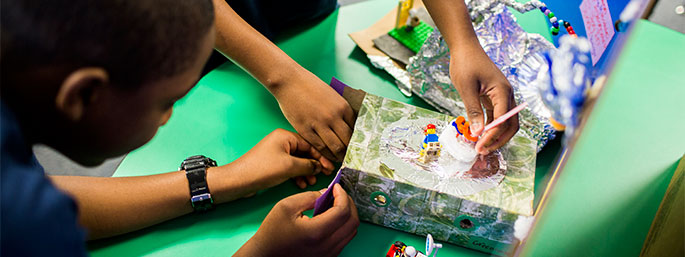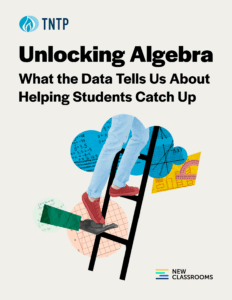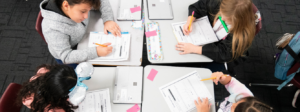Last fall, I found myself standing in the back of a middle school science classroom in Washington, D.C., puzzling over how best to support the first-year teacher—I’ll call her Alexis—I was working with. I had arrived well before the start of class to ask her about her goals and growth areas. “Classroom management!” she’d exclaimed. “I just need my students to stay in their seats and stop calling out so I can get through the content I’ve planned.”
But within a few minutes of observing her instruction, it became clear to me that getting her students to stay in their seats wasn’t the crux of Alexis’s problem. Her students were bored, confused and lacking in investment. In essence, her management woes stemmed from a poorly designed lesson—not poor management techniques. Her unstructured lecture on photosynthesis left me itching to get out of my seat!
I considered the options. I could help Alexis plan her next lesson around a well-crafted objective or support her in designing discussion prompts to push her students’ thinking. But before we could even get there, I had to make sure she had a clear picture of what excellent instruction looks like in a science classroom—so she would know what to aim for.
This is where a “vision of excellent instruction” comes in. If “vision” sounds like it could be a vaguely articulated, dream-like image of a successful classroom, think again. These are concrete tools that provide teachers, coaches, school leaders and district partners with a shared and very specific picture of excellent, Common Core-aligned instruction. Over the past year, TNTP has been hard at work developing, testing and refining these visions in a variety of classroom settings: from early childhood to science, math and literacy.
Often, the challenge for new teachers like Alexis is that they don’t always know what they need to do to support their students appropriately—and we can’t expect them to if they haven’t been given explicit criteria for what successful instruction in their subject and grade should look like. By articulating a common understanding of the types of classrooms we’re working together to build, the visions (which are framed in plain, concise language) are critical to unlocking strategically prioritized, student-centered teacher development.
Here’s an example of what this looks like, from our vision for excellent science instruction:
In our science classrooms, we strive to build scientifically proficient students prepared to meet the demands of college and careers and to engage as productive citizens of the world. In our classrooms:
Students do the thinking. We know how to read, write, speak, and think about science, and we also know that our students won’t gain these skills if we do the work for them. We give our students the support they need to develop science literacy, analyze data, integrate mathematical and computational thinking, develop models and design solutions. We know students cannot comprehend scientific practices in depth without directly experiencing those practices for themselves; therefore, we check the ratio of teacher work to student work in each and every lesson and ensure that our students get many opportunities to be critical thinkers, readers, writers, and speakers.
My experience with Alexis showed me how our vision of excellent science instruction could serve as a foundation, so that she and I would have a common understanding of what we were aiming for and could then work backwards to help her get there. For example, the vision could help Alexis recognize that using an inquiry-based lesson would be more engaging than starting with a lecture, or that asking her students to create a diagram describing photosynthesis would establish a classroom culture where students do the thinking. With a better grasp on what an engaged, invested classroom of science learners should look like in action, Alexis would be equipped to make adjustments to her own planning and instruction moving forward.
We see our visions, which are grounded in the Common Core State Standards and the skills students will need for success in college and careers, as complements to evaluation tools. They go a step beyond the individual skills or actions that evaluation tools capture to provide a holistic, big-picture vision for what a successful classroom looks like. They allow us to support new teachers’ development effectively because we can easily pinpoint strengths as well as gaps: What type of writing are students doing? What type do they need to do? What needs to change? With the visions as guides, coaches or school leaders can walk into a classroom and look beyond the teacher’s instructional strategies to what kids are actually learning, and how.
Visions of instructional excellence are particularly important in the transition to the Common Core State Standards. While many schools are early in the process of implementing the new standards, the visions help us clarify what the Common Core looks like in action, not just in theory.
We’re continuing to build upon these visions as we test them in the field. But our experience so far points clearly to the fact that holding a shared, clear vision of great instruction is one more way we can train effective teachers and support them in accelerating their students’ academic growth.







